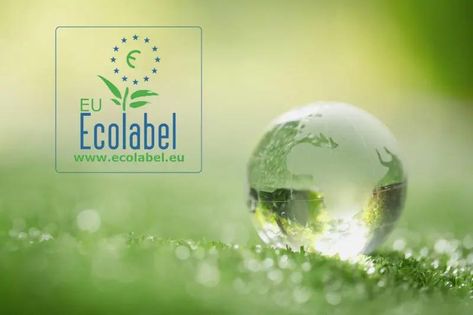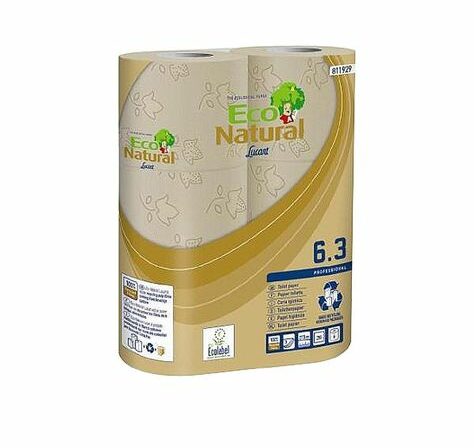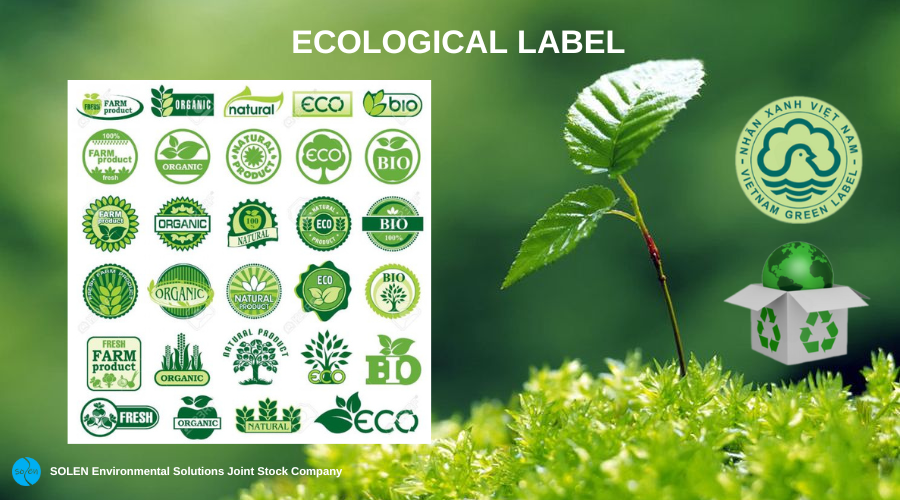1. What is an eco-label?
Product labelling and ecolabels in particular represent important instruments for promoting markets for environmentally friendly products. By providing information on the environmental product characteristics, they offer potential buyers the possibility to select a product based on features that would otherwise remain unobservable or very difficult to assess.[2] Certification and eco-labeling of products will ensure consumer safety and help consumers make environmentally friendly purchasing decisions.
According to the World Trade Organization WTO and the World Bank: Ecolabel is a type of label issued to products that meet certain criteria by a government agency or a government-sponsored organisation. proposed mandate. These criteria are relatively comprehensive to assess the impact on the environment during different stages of the product cycle: from preliminary processing, processing, processing, packaging, distribution, and using until thrown away. There are also cases where people are only interested in a certain criterion that characterises the product, for example the level of emissions generated, recyclability, etc. [1]
According to the Global Ecolabel Network (GEN), the definition: Ecolabel is a label that indicates the environmental superiority of a product or service compared to other products and services of the same type based on assessments. product life cycle.[1]
According to the International Organization for Standardization ISO: An eco-label is an assertion, representing the environmental attributes of a product or service, which can be in the form of a declaration, symbol or chart on the product or packaging label. , in product literature, magazines, technical journals, advertising, and other forms.[1]

Figure 1: Ecological label – Eco-label (Source: Pinterest)
2. Types of eco-label
The International Organization for Standardization (ISO) classifies three types of labels and environmental declarations as prescribed in the ISO 14024:2018, ISO 14021:2016 and ISO 14025 standard systems.
- ISO 14024 (Type I label/Type I environmental declaration): Labeling must be approved by a third party (not by the manufacturer or retailer), based on a cycle assessment method Life cycle of a product (Life cycle is the successive and interconnected stages of a product system, from access to raw materials or from the generation of natural resources until disposal Final). According to this standard, products must meet different requirements and often depend on the strictness of the standard and the standard management agency.
- ISO 14021 (Type II label/Type II environmental declaration): Researched, evaluated and announced by manufacturers or retail agents themselves, also known as “Green Declaration”, can be published written text, symbols or drawings on the product as decided by the manufacturer or retail agents. This declaration must meet a number of specific requirements such as: accurate and not misleading, proven and tested and confirmed, corresponding to the specific product and used only in appropriate circumstances. appropriate or intended, not liable to misinterpretation… for the selection of characteristic symbols on the basis that they are widely recognized or used, for example the Mobius ring, for functional claims. recyclable or recyclable amount.
- ISO 14025 (Type III Label/Type III Environmental Declaration): Includes quantitative information about the product based on product life cycle assessment. The main purpose is to provide quantified environmental data that can be used to show comparisons between products. Similar to Type I labels, the declaration must be recognized by a third party, but the product’s environmental parameters must also be widely reported in the Technical Report.[3]
The common point of all three types is that they must comply with the 9 principles stated in the ISO 14020:1998 standard (principles on assessment standards, applicable terms, procedures, methods…) in which, points The key is that the information provided must be scientific, accurate and based on the results of the product life cycle assessment process, and the procedures must not hinder international trade activities.[1]
3. Eco-label in Vietnam
In Vietnam, the concept of “Environmental label” or “Eco label” is still quite unfamiliar to both manufacturers and consumers. Limitations often encountered with issues related to eco-labels include:
- General society’s awareness of environmental issues is still low, so the pressure on eco-labeled products from the Government and consumers is insignificant.
- Knowledge about the environmental characteristics of products for environmental managers and consumers is limited, so the publication of Environmental Reports according to type III labels is also of little significance.

Figure 2: The product is labeled with an eco-label (Source: Pinterest)
However, since 2009, Vietnam has implemented the Vietnam Green Label program. This is the name of the Eco-label Program (NST) with the goal of continuously improving and maintaining the quality of the living environment through minimizing the use and consumption of energy, materials as well as generated waste. in the process of production, business and consumption of products and services to serve life.[4]
Products that have been certified and eco-labeled in Vietnam include: Alkaline Ionized Water of Fujiwa Vietnam Co., Ltd., Fluorescent light bulbs of Photoelectric Lamp Joint Stock Company, Coatings used in Construction paint from Jotun Vietnam Paint Co., Ltd., Machinery from Fuji Xerox Asia Pacific Pte Ltd, battery from GS Battery Vietnam Co., Ltd.
REFERENCES
[1] Vietnam Ministry of Industry and Trade – Institute for Industry and Trade Strategy and Policy Research (2022); “Environmental labels and application issues in Vietnam”
[2] Asta Eder, Lara Dammer (2018); “D4.2 Report on labelling requirements for hazard c communication and ecolabelling possibilities”; Renewable solvents with high performance in application and improved toxicity profile; 745450
[3] Asta Eder, Lara Dammer, Ángel Puente(2015); “Green label report”; Chemiepark Knapsack, Industriestr. 300, 50354 Hürth
[4] Le Minh Anh; General Department of Environment; Environmental magazine, No. 7/2013



 Tiếng Việt
Tiếng Việt 日本語
日本語